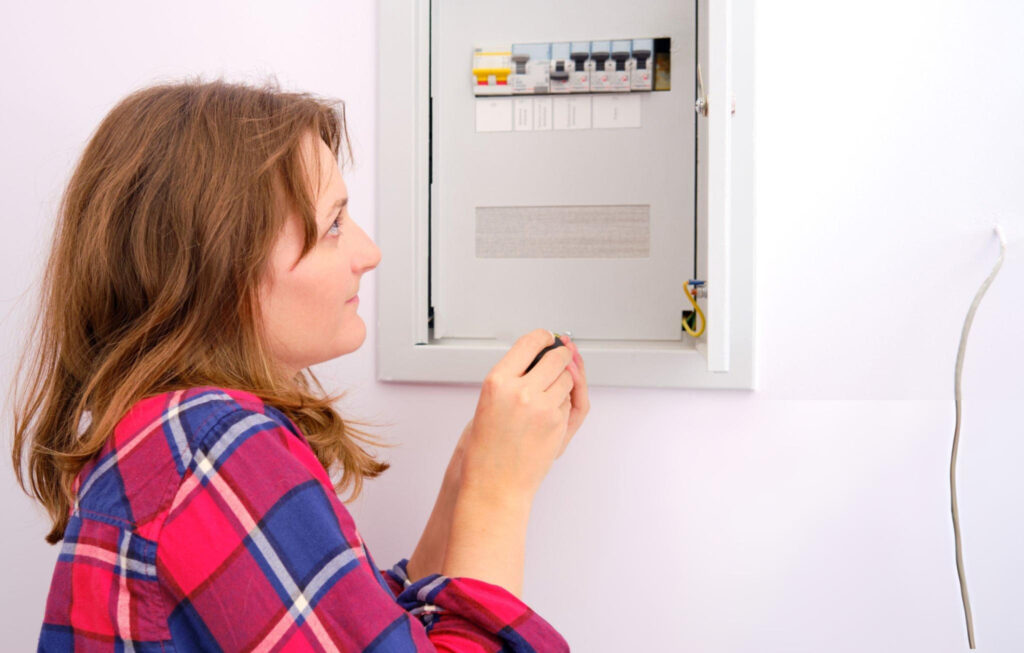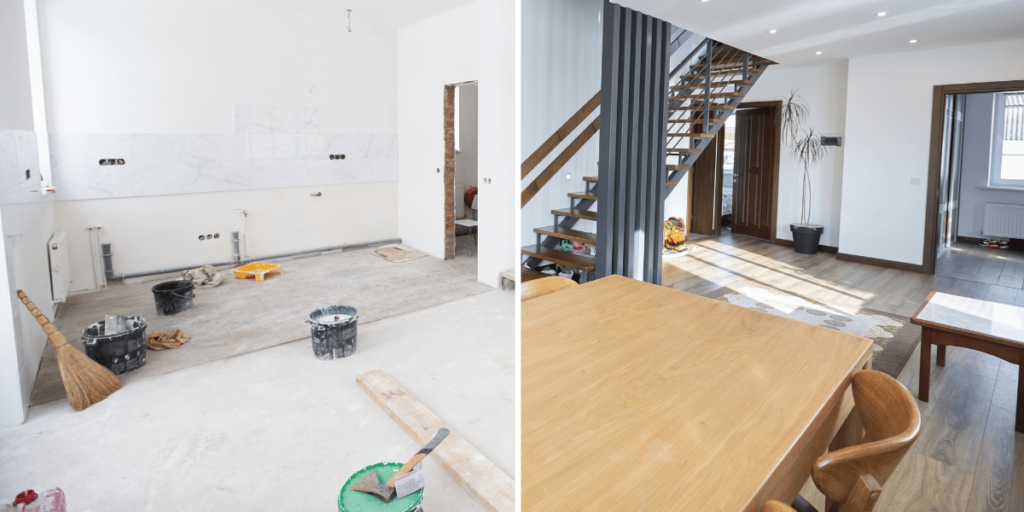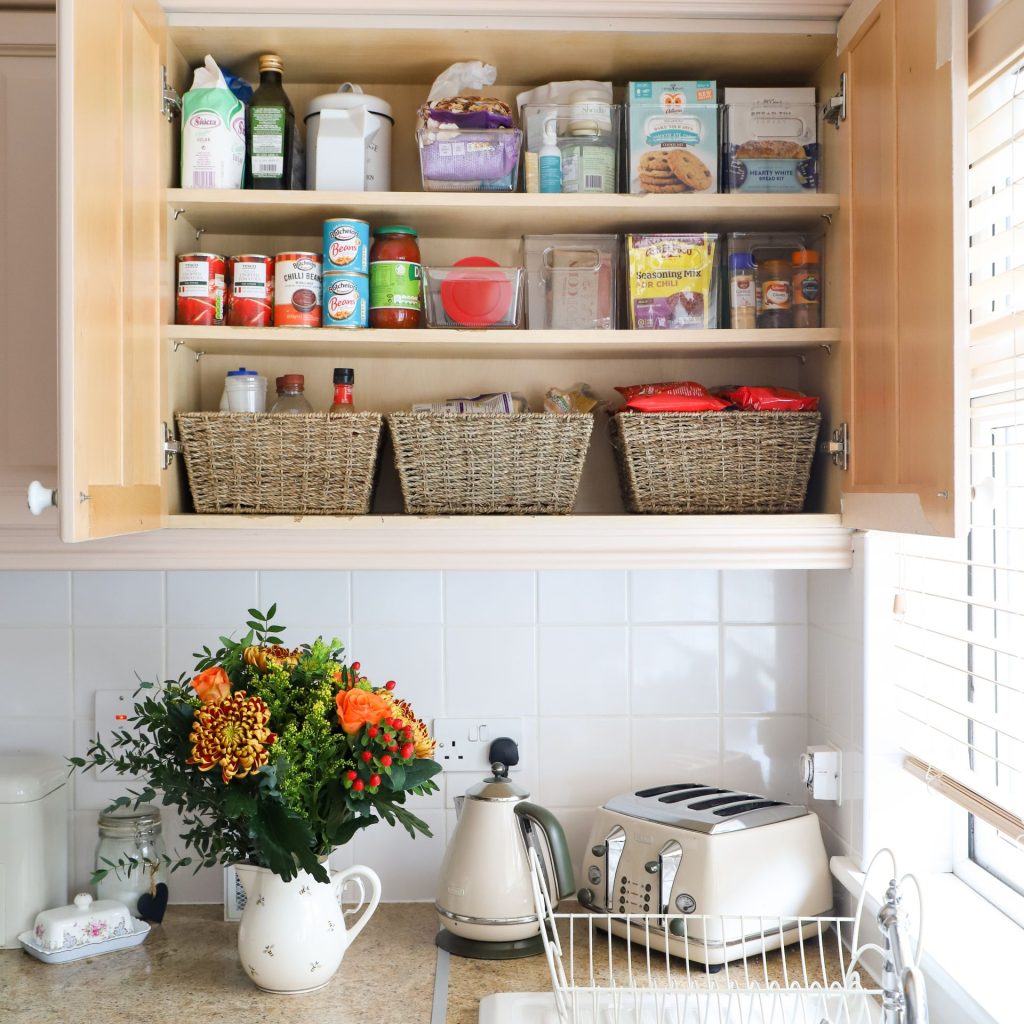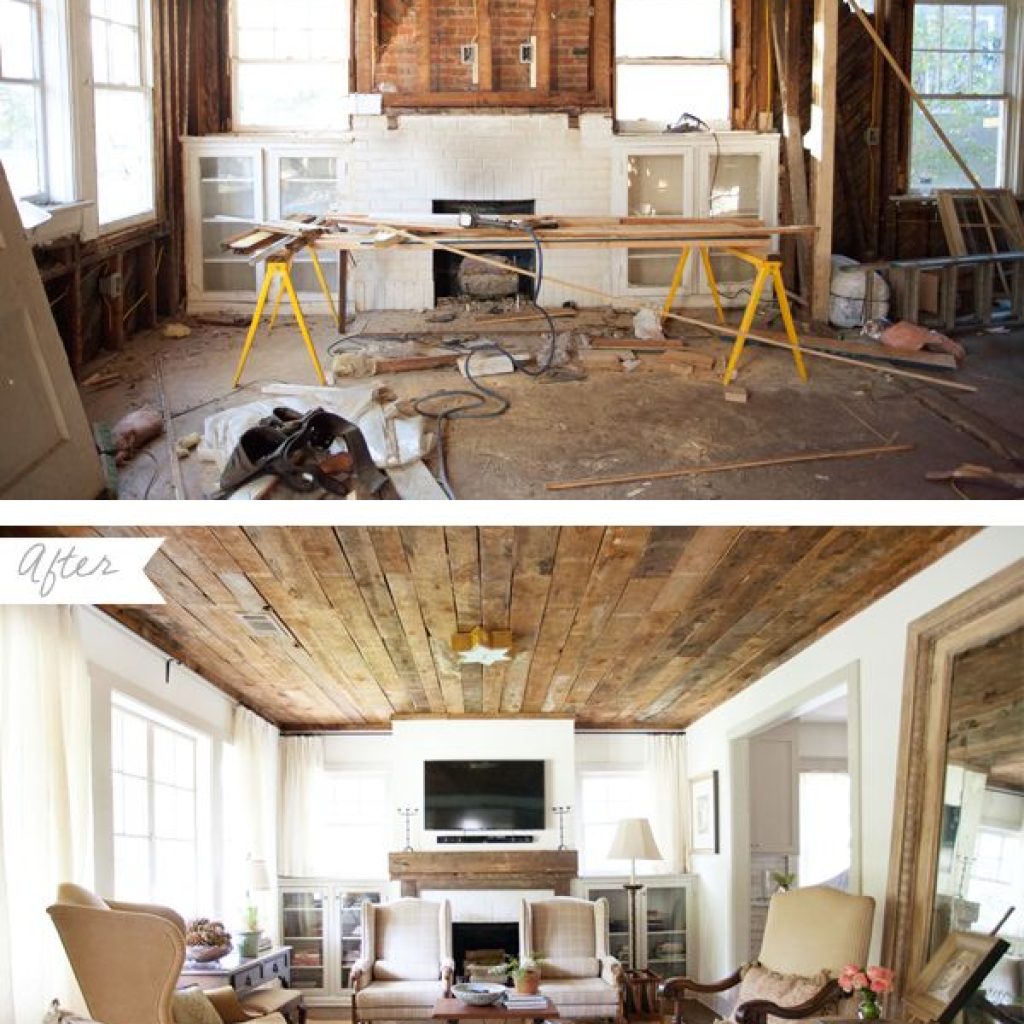Renovating a home can be both exciting and challenging. If you’re searching for the best home renovation tips for first-time homeowners, you might feel overwhelmed by where to start.
Understanding the best home renovation tips for first-time homeowners can make the entire process smoother and more enjoyable. By planning and preparing effectively, you’ll set yourself up for success. Knowing how to budget, where to start, and what to prioritize can save both time and money. It’s crucial to focus on renovations that not only enhance your home’s value but also improve its functionality and comfort.
This guide will help you navigate the renovation process, offering practical advice and insights tailored for beginners. With the right approach, your first renovation project can be a rewarding experience, transforming your space into a dream home.
Planning Your Renovation
Embarking on your first home renovation can be both exciting and daunting. The key to a successful project lies in meticulous planning. Whether you’re dreaming of a modern kitchen, a cozy living room, or a complete home makeover, having a clear plan ensures that your renovation journey is smooth and enjoyable.
Let’s dive into some essential tips for planning your renovation, starting with setting a budget and creating a timeline.
Setting A Budget
One of the first steps in planning your renovation is setting a budget. This helps you understand what you can afford and prevents overspending.
Here are some simple steps to help you set a realistic budget:
- Assess Your Finances: Take a close look at your savings and determine how much you can allocate to the renovation.
- Research Costs: Look up the cost of materials, labor, and other expenses. Websites, home improvement stores, and contractors can provide estimates.
- Prioritize Needs vs. Wants: Make a list of what’s essential versus what’s nice to have. This helps in making tough decisions if the budget gets tight.
- Include a Contingency: Set aside 10-20% of your budget for unexpected expenses. Renovations often come with surprises!
For example, when my friend renovated her kitchen, she found that the costs for countertops and cabinets were higher than expected. Having a contingency fund saved her from financial stress.
Creating A Timeline
Another crucial element of planning your renovation is creating a timeline. This ensures the project stays on track and helps you manage your expectations.
Here’s how to create an effective timeline:
- Define Your Goals: Determine what you want to achieve and set a start and end date for the project.
- Break Down the Project: Split the renovation into smaller tasks, such as demolition, plumbing, electrical work, and finishing touches.
- Consult Professionals: Speak with contractors and experts to get realistic time estimates for each task.
- Allow for Delays: Factor in some buffer time for potential delays due to weather, supply issues, or other unforeseen circumstances.
For instance, during my cousin’s bathroom renovation, unexpected plumbing issues extended the project by two weeks. Being flexible with the timeline helped them manage the delay without stress.
Planning your renovation with a clear budget and timeline not only keeps the project organized but also helps you stay calm and confident throughout the process. Happy renovating!

Choosing The Right Contractors
Choosing the right contractors can make or break your home renovation. It ensures your project runs smoothly and meets your expectations. As a first-time homeowner, this step can feel daunting. But with the right approach, you can find reliable professionals to bring your vision to life.
Researching Professionals
Start by asking friends and family for recommendations. They often know trustworthy contractors. Check online reviews to learn about others’ experiences. Look for contractors with positive feedback and completed projects similar to yours.
Visit their websites to see their work. Ensure they have the necessary licenses and insurance. This protects you from potential issues. Also, verify their standing with local trade associations. This shows their commitment to quality and professionalism.
Evaluating Quotes
Get quotes from at least three contractors. This gives you a sense of the market rates. Ensure each quote covers the same scope of work. Compare them carefully. Look for any hidden fees or vague terms.
Don’t choose based on price alone. Consider the contractor’s reputation and experience. A lower bid might mean cutting corners. A higher bid could reflect better materials or workmanship. Balance cost with quality to make the best decision.
Design Inspiration
Embarking on your first home renovation journey is incredibly exciting, but it can also be a bit overwhelming. You might be asking yourself, “Where do I start?” Don’t worry, we’ve got you covered. Finding the right design inspiration is crucial to transforming your living space into a place that truly feels like home.
Let’s dive into some tips on how to uncover your unique style and incorporate trends that will make your home both beautiful and functional.
Finding Your Style
One of the first steps in any renovation project is discovering your personal style. Are you drawn to clean lines and minimalist designs, or do you prefer the charm of rustic decor?
Here are some ways to find your design style:
- Explore Design Magazines and Websites: Browse through home design magazines or websites like Pinterest and Houzz. Create a collection of images that resonate with you.
- Visit Showrooms: Take a trip to furniture and home decor showrooms. Seeing items in person can give you a better idea of what you like.
- Reflect on Your Preferences: Think about the colors, textures, and materials that make you feel comfortable and happy.
Remember, your home should reflect your personality and lifestyle. Don’t be afraid to mix and match different elements that speak to you.
Incorporating Trends
While it’s important to stay true to your style, incorporating current trends can add a fresh and modern touch to your home.
Here are some tips on how to blend trends with your personal taste:
- Research Popular Trends: Look for the latest trends in home design. This could be anything from bold color schemes to sustainable materials.
- Mix Trends with Classics: Balance trendy pieces with timeless items. For example, pair a trendy light fixture with classic furniture.
- Start Small: If you’re unsure about a trend, try it out in small doses. Add trendy accents like throw pillows or artwork before committing to larger changes.
Trends come and go, but blending them thoughtfully with your style can create a unique and inviting home. After all, you want your space to feel current but not like you’re living in a fleeting fashion show.
Maximizing Space
Are you stepping into the world of homeownership? It’s exciting, isn’t it? But let’s be honest, making the most out of your new space can be daunting. Don’t worry! We have gathered some of the best tips to help you maximize every inch of your home. Whether you’re dealing with a cozy apartment or a spacious house, these tips will make your home feel bigger and brighter.
Smart Storage Solutions
One of the biggest challenges when it comes to the best home renovation tips for first-time homeowners is finding storage solutions. But, smart storage solutions can transform your home. Think of it as a game of Tetris – every piece has its place!
- Under-bed Storage: Use bins or drawers under your bed to store seasonal clothes, shoes, or even books.
- Wall-mounted Shelves: These are great for displaying items or keeping essentials within reach without taking up floor space.
- Multi-functional Furniture: Invest in furniture that serves more than one purpose, like ottomans with hidden storage or beds with built-in drawers.
A friend of mine once said, “The best storage solutions are the ones you don’t see.” And she was right! Hidden storage can make your home look tidy and spacious.
Open Concept Ideas
If your home feels cramped, consider an open concept design. It’s like magic – walls disappear, and suddenly your home feels twice as large!
- Knock Down Walls: Removing non-essential walls can create a more open and airy feel. Make sure to consult a professional first!
- Use Light Colors: Light colors on walls and furniture can make rooms appear larger and more inviting.
- Glass Partitions: If you need to divide spaces but still want an open feel, consider glass partitions. They provide separation without blocking light.
Remember, the goal is to create a flow that makes your home feel connected and spacious. A wise person once said, “Your home should be a story of who you are, and a collection of what you love.” So, make it your own!
In conclusion, maximizing space is all about creativity and smart planning. Use these tips to transform your home into a functional and beautiful space. Happy renovating!
Diy Vs Professional Help
When it comes to renovating your home, the question of whether to tackle the project yourself or hire a professional can be a tough one. Both options have their pros and cons, and the right choice can depend on your skills, the complexity of the project, and your budget. In this section, we’ll explore the important factors to consider when deciding between DIY and professional help, specifically focusing on assessing your skills and knowing when it’s time to bring in the experts.
Assessing Your Skills
Before you dive into any home renovation project, it’s crucial to take a good, hard look at your skills. Are you handy with a hammer, or do you struggle to assemble IKEA furniture? Here’s a simple way to assess your capabilities:
- Past Experience: Have you successfully completed similar projects before? If so, you might be more prepared than you think.
- Complexity of the Task: Simple tasks like painting walls or installing shelves can be great DIY projects. More complex tasks, like electrical work or plumbing, often require professional expertise.
- Time and Patience: Do you have the time to commit to the project? Renovations can be time-consuming, and patience is key to getting things right.
Consider these factors carefully. Sometimes, the thrill of doing it yourself can be overshadowed by the frustration of unexpected problems.
Knowing When To Hire
There are certain situations where hiring a professional is not just a good idea—it’s essential. Here are some scenarios where professional help is the best option:
- Safety Concerns: If the project involves electrical work, plumbing, or structural changes, safety is a major concern. Professionals are trained to handle these risks.
- Code Compliance: Many renovations, especially those involving structural changes or systems like HVAC, need to comply with local building codes. Professionals know these regulations inside and out.
- Quality of Work: Professionals bring a level of craftsmanship that can be difficult to achieve on your own, especially for intricate tasks like tiling or cabinetry.
Remember, hiring a professional doesn’t mean you’re not capable. It simply means you’re making a smart decision to ensure the best outcome for your home.
In conclusion, whether you decide to DIY or hire a professional, the key is to be honest with yourself about your skills and the demands of the project. Sometimes, the best renovations come from a blend of both approaches.
So, roll up your sleeves where you can, and don’t hesitate to call in the pros when needed. Happy renovating!
Sustainable Renovations
Embarking on home renovations for the first time can be both exciting and daunting. Focusing on sustainable renovations is a smart choice. It benefits the environment and can save money in the long run.
Eco-friendly Materials
Choose eco-friendly materials for your home renovation projects. Bamboo flooring is a great option. It grows quickly and is highly durable. Reclaimed wood adds character and reduces waste.
Use low-VOC paints to improve indoor air quality. They emit fewer harmful chemicals compared to traditional paints. Consider recycled glass for countertops. It is stylish and environmentally friendly.
Energy-efficient Upgrades
Investing in energy-efficient upgrades makes a big difference. Install LED lighting throughout your home. LED bulbs use less energy and last longer. Replace old windows with energy-efficient models. This reduces heating and cooling costs.
Upgrade to a smart thermostat. It helps to regulate temperature and save energy. Insulate your home properly. Good insulation keeps the house warm in winter and cool in summer.
Staying On Track
Staying on track during a home renovation can be challenging. It’s easy to get overwhelmed with all the decisions and tasks. But with the right approach, you can manage your project smoothly.
Managing Costs
Budgeting is crucial for any renovation. Start by listing all potential expenses. This includes materials, labor, and permits. Then, add a 10-20% buffer for unexpected costs. Always compare prices before making purchases. Look for sales and discounts on quality materials. It helps to prioritize your spending.
Focus on essential repairs first, then move to cosmetic changes. Keep track of all your expenses. Use a spreadsheet or a budgeting app.
Avoiding Common Mistakes
Many first-time homeowners looking for the best home renovation tips for first-time homeowners should be aware of common mistakes during renovations. One major error is underestimating the project scope. Always plan for more time and money than you think you need.
Another frequent mistake is not hiring professionals for complex tasks. Electrical and plumbing work should always be left to experts.
Trying to do it yourself can lead to costly repairs later. Also, avoid changing plans mid-project. Stick to your original plan to save time and money. Lastly, don’t forget about permits. Check local regulations to ensure your work is legal and safe.
Post-renovation Tips
So, you’ve completed your home renovation and everything looks fantastic. The hard work is behind you, but there’s still a bit more to do to ensure your home stays in top shape. Post-renovation care is essential for maintaining the beauty and functionality of your newly renovated space.
Here are some essential post-renovation tips to guide you through the next steps.
Final Inspections
Before you settle in and start enjoying your new space, it’s crucial to conduct a final inspection. This step ensures that everything is completed to your satisfaction and there are no overlooked details.
- Check for defects: Look for any issues like chipped paint, loose fixtures, or uneven flooring. It’s easier to fix these problems now than later.
- Test all utilities: Make sure that all your plumbing, electrical outlets, and appliances are working correctly. A malfunctioning outlet or a leaky faucet can be quite the annoyance.
- Review contractor work: Go through the work done by your contractors. Ensure they have followed the project specifications and that you are happy with their work.
Think of this like a final exam. You want to catch any mistakes before you give yourself an A+ and move in.
Maintaining Your Home
Once you’ve moved in, keeping your home in good condition is key. Regular maintenance can prevent small issues from becoming big headaches.
- Clean regularly: Dust and dirt can quickly build up, especially after renovations. Regular cleaning keeps your home looking fresh and new.
- Inspect periodically: Set a schedule to check your home for any signs of wear and tear. This can help you catch problems early.
- Service appliances: Your new appliances need love too. Follow the manufacturer’s maintenance recommendations to keep them running efficiently.
- Touch up paint: Keep some extra paint on hand for touch-ups. It’s a quick fix that can make a big difference in maintaining a polished look.
- Manage humidity: Use dehumidifiers or air conditioners to keep moisture levels in check, especially in areas prone to dampness. This helps in preventing mold and mildew.
Maintaining a home is a bit like tending a garden. A little bit of effort here and there will keep everything in bloom.
With these tips, you can enjoy your beautifully renovated home for years to come. Remember, the goal is not just to have a stunning home today, but to keep it looking great for the future.

Frequently Asked Questions
What Should You Do First In A Home Renovation?
Start by creating a detailed plan and budget for your home renovation. Prioritize tasks and hire necessary professionals.
What Is The 30% Rule For Renovations?
The 30% rule for renovations suggests spending no more than 30% of your home’s value on improvements to avoid over-investing.
Is $20,000 Enough To Remodel A House?
$20,000 can cover basic home remodels, like painting and flooring. Major renovations may require a higher budget.
What Is The Hardest Part Of A House Renovation?
The hardest part of a house renovation is managing unexpected issues and costs. Planning and budgeting can be challenging.
Conclusion
Renovating your first home is exciting. Start with a solid plan. Prioritize essential repairs. Budget wisely to avoid surprises. Invest in quality materials for lasting results. Don’t rush; take your time. Seek professional help when needed. Enjoy the process and make it your own.
With these tips, your renovation journey will be smoother. Happy renovating!












2 thoughts on “Best Home Renovation Tips for First-Time Homeowners: Expert Advice”
Pingback: Smart Home Renovation Ideas: Transform Your Space! - Sweet Home Zone
Pingback: Smart Home Renovation Ideas That Save Money & Add Comfort